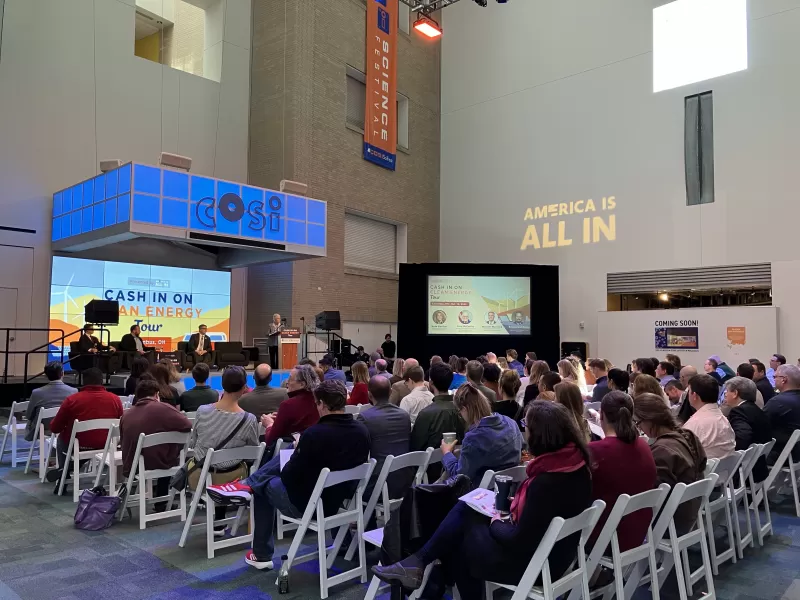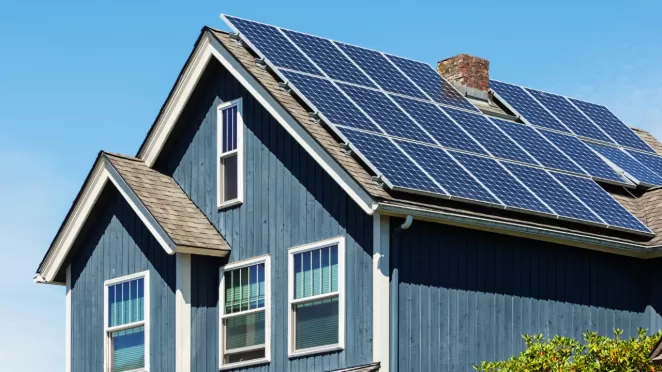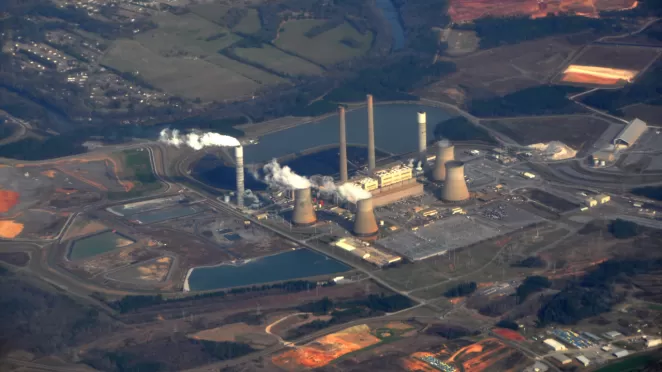
It’s clear the landmark Inflation Reduction Act (IRA) is already driving significant investment in clean energy – over $300 billion worth, according to a recent report. But part of the beauty of the IRA is that it isn’t solely intended to spur the major investment deals that garner headlines; it’s a powerful tool for small towns, nonprofits, and households to raise their climate ambition. If they know how to use it, that is.
To that end, America Is All In hit the road this fall, bringing IRA resources, expertise, and collaboration to three cities: Charlotte, North Carolina; Orlando, Florida; and Columbus, Ohio. In all, nearly 400 people showed up to learn how they can take advantage of IRA clean energy funding, representing a diverse mix of industries and interests.
One of the hottest topics at the sessions also happens to be one of the IRA’s lesser known provisions: “direct pay” allows tax-exempt entities, like schools and nonprofits, to be reimbursed the equivalent of tax breaks for clean energy projects, which they could not previously access. It’s already proving to be a game-changer.
“What the IRA has enabled us to do as a nonprofit, tax-exempt hospital system is to gain access to the federal dollars we need to drive substantial energy projects that will reduce our emissions and help us meet our climate targets,” said Rob Roy, chief investment officer for AdventHealth, one of the largest faith-based hospital systems in the country.
Roy estimates the change unlocked $3.5 to $4 million in incentive pay as the hospital system revamps its corporate campus with a roughly 3 MW solar array and 31 dual EV chargers. “That’s a big deal,” he said.
Health care with a climate mission
![]()
With 52 hospitals in nine states, AdventHealth has a substantial footprint. And, starting two years ago, the health care provider decided to take meaningful steps to reduce the climate impact of that footprint. They undertook full-scope carbon accounting and then set about implementing a framework for cutting overall emissions 50% by 2030.
To hit that target and then keep advancing toward net zero, AdventHealth is exploring every avenue, including swapping old gas-fired equipment for electric alternatives, installing on-site solar, and investing in power purchase agreements (PPA) to purchase off-site wind and solar power. From there, they plan to take on even tougher challenges, like transitioning some carbon-intensive anesthetic gasses and electrifying their vehicle fleet.
“[The IRA] makes all those projects more feasible,” Roy said. “We're not superhuman. We're just doing work that's available to be done. Hopefully, it inspires other people to do the same thing.”
Bringing solar power to the Sunshine State
![]()
Solar United Neighbors is a truly grassroots organization that has grown from one neighborhood in DC to 12 states, territories, and Puerto Rico. As they help create solar co-ops in these communities, they’re educating customers and guiding them through what can be a challenging process.
“The IRA is literally life-changing,” said Heaven Campbell, Florida program manager. One of the clearest benefits she’s seeing is that it’s allowing smaller nonprofits, like food pantries, to add solar and significantly reduce their electricity bill. “It feels really rewarding and exciting to be able to help them put more money into their mission,” Campbell said.
Their ongoing national co-op, called Ready, Set, Solar! for Nonprofits, is open to any tax-exempt organization to join and learn about the IRA’s 30% credit for installing solar, plus have their property assessed for solar compatibility. Campbell said the organization is also focused on increasing participation in the Rural Energy for America Program (REAP), which received more than $2 billion from the IRA for clean energy and efficiency projects in rural communities.
All told, the IRA has completely reshaped what Campbell considers feasible in the state of Florida, whose governor has rejected some IRA funds. “It’s opened so many doors,” Campbell said. “Things that were not on the table for Florida before. They just weren’t going to happen.”
Small town taking big steps
![]()
George Santucci, sustainability manager for the town of Boone, North Carolina, had heard about municipalities being able to benefit from IRA incentives, but had no idea how to get started. “None of us had a clue. How do you actually qualify for these things?”
That brought him to the Charlotte event, where a tax expert walked attendees through the IRA process for registering clean energy projects and claiming benefits. Santucci has big plans for translating that knowledge into action.
The town’s municipal operations are already powered by 100% renewable energy and Santucci is putting the finishing touches on the new climate action plan. He’s planning to purchase EVs and replace old gas furnaces for more efficient, electric heat pumps. He also wants to pursue more distributed solar for the town and create resources to help residents take advantage of consumer incentives for EVs and home efficiency and electrification.
“[The IRA] made more possible,” Santucci said. “I can be more aggressive about chasing these things now.”
Cutting emissions in unlikely ways
![]()
A wastewater treatment plant may not seem like a natural fit for clean energy incentives, but that’s part of the excitement for Tyler Schweinfurth, an engineer with the city of Columbus, Ohio. As they were undertaking the process of rehabbing some of their equipment, a consultant asked if they’d considered IRA incentives. While Schweinfurth had heard of the law, he recalled thinking, “But that has nothing to do with us, right?”
It turns out the IRA offers incentives for biogas, including in the wastewater treatment process. Schweinfurth’s team decided to build more digesters, which turn solids into biogas that can then be used to provide electricity. Thanks to the IRA, they can recoup 50% of the cost and significantly reduce their climate impact. This project aligns with the city’s 2030 sustainability goals of a 50% reduction in organic waste and a 45% reduction in carbon emissions. They also plan to evaluate fugitive methane solutions to further reduce emissions and capture additional biogas.
“The IRA definitely changed our mindsets,” Schweinfuth said. “It’s becoming more and more rewarding the closer we’re getting because I can see the impact in the greenhouse gas reduction. It’s been really cool.”
While the IRA is still in its infancy, the law is clearly redefining what’s possible for individuals and organizations of all sizes. By raising ambition across the board – from the local food pantry to major corporations – it’s demonstrating just how much progress can be made. Not only are these organizations contributing to the country’s critical climate targets, they’re also finding new ways to save money, improve air quality and health, and bring their operations into the future.

Latest
More articles >
